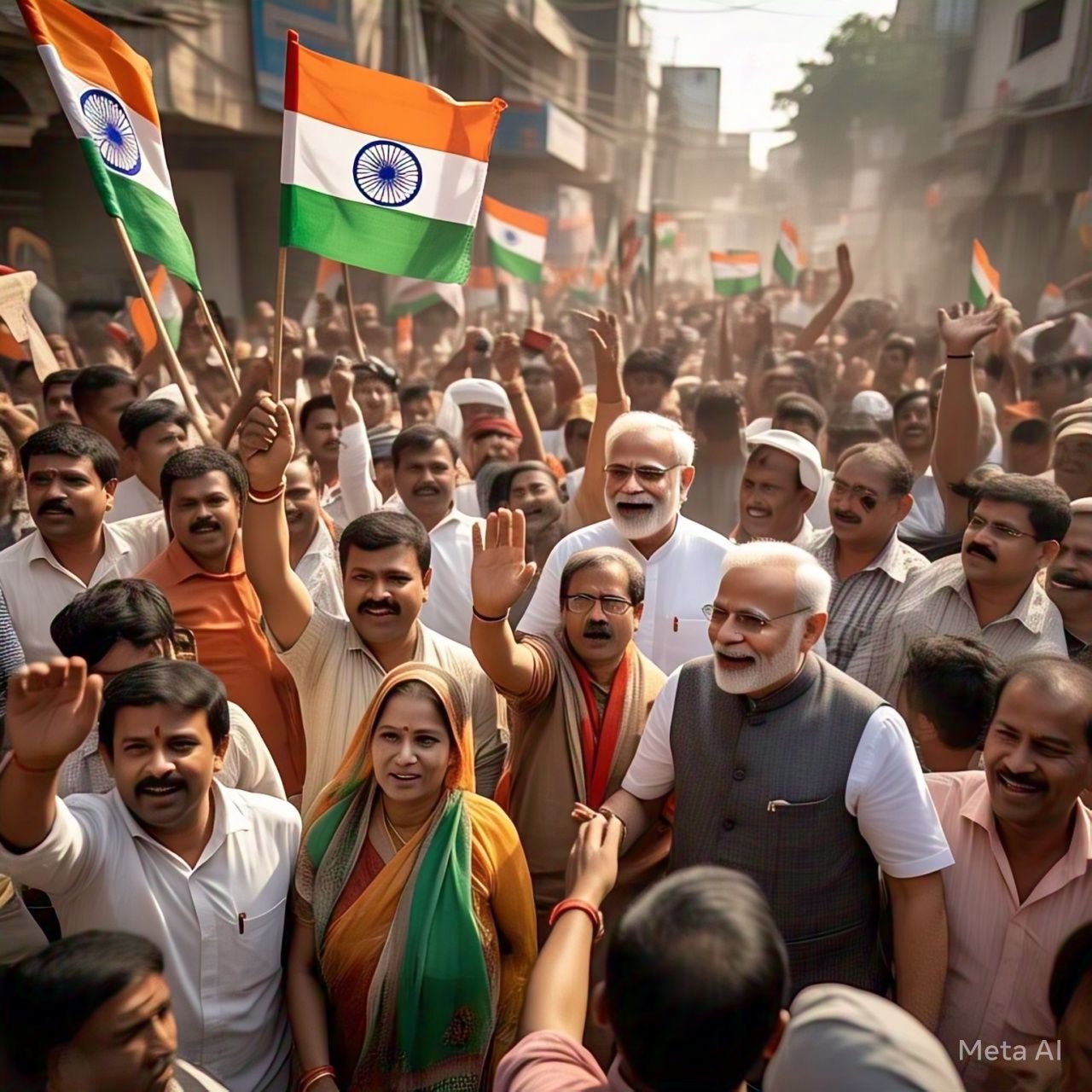
As Bihar prepares for its upcoming assembly elections later this year, the political landscape is witnessing an intense battle for supremacy between the ruling National Democratic Alliance (NDA) and the Opposition Gathbandhan led by the Rashtriya Janata Dal (RJD) and Congress. With campaigns unofficially underway, both camps are setting the tone for a high-stakes contest that will shape the state’s future political trajectory.
NDA's Strategy and Leadership
The ruling NDA, led by Prime Minister Narendra Modi, Union Home Minister Amit Shah, and Chief Minister Nitish Kumar of the Janata Dal (United), is banking on its governance record and development agenda. The coalition, a formidable five-party alliance, is touting the benefits of the “double-engine” government—referring to the synergy between state and central governments—while contrasting its leadership with the alleged “jungle raj” of the RJD’s previous tenure.
Nitish Kumar’s leadership remains a key factor for the NDA, having helmed Bihar for most of the past two decades. Despite facing waves of anti-incumbency, the BJP’s demonstrated ability to overcome electoral fatigue has given the NDA a boost. The coalition is betting on its governance track record, infrastructural projects, and welfare schemes to maintain its hold over Bihar’s electorate. Schemes such as the Har Ghar Nal Yojana (tap water scheme), road construction projects, and employment initiatives have been aggressively promoted to appeal to voters.
A significant aspect of the NDA's campaign is the outreach to women voters, a segment that has been crucial in past elections. Nitish Kumar’s flagship programs, such as the cycle scheme for girls and the reservation for women in local governance, have been central to the JD(U)'s pitch. The BJP, on the other hand, is focusing on its law-and-order narrative, frequently invoking Bihar’s transformation under NDA rule compared to the crime-ridden image of the state under RJD.
Opposition Gathbandhan's Challenges and Prospects
On the other side, the Opposition Gathbandhan remains a work in progress. While the RJD, Congress, and three Communist parties have come together, they are yet to fully consolidate their electoral strategy. The Congress has attempted to make inroads by promoting youth leader Kanhaiya Kumar, though the party still struggles to regain its footing in the state. The RJD, long the dominant Opposition force, now faces the challenge of distinguishing itself with a fresh social and political agenda.
The Communist Party of India (Marxist-Leninist), the largest of the Left parties, has bolstered its standing through grassroots mobilization and an improved electoral performance in recent years. The party’s focus on civil society movements and the representation of unorganized labor groups presents an alternative political platform that could attract a broader voter base. The Left parties are looking to capitalize on issues such as unemployment, land rights, and wage security for daily wage laborers, which continue to plague the state.
For the RJD, which has been reduced to a family-driven enterprise, the task ahead is significant. While it enjoys strong support among Yadavs and Muslims, its challenge lies in expanding beyond its traditional vote bank. Tejashwi Yadav, the party’s young leader, must re-energize the gathbandhan, counter NDA’s governance claims, and address criticism of his party’s past record in power. He has been actively engaging with youth voters by promising employment reforms, skill development programs, and farmer-friendly policies. His social media campaigns have focused on connecting with the aspirations of Bihar’s younger population, which makes up a significant portion of the electorate.
The Emergence of Third-Front Contenders
Adding an unpredictable element to the Bihar political equation is Prashant Kishor’s Jan Suraj Party, which has emerged as a wildcard after securing 10% of the vote in recent bypolls. His entry into the electoral fray threatens to disrupt traditional vote-bank calculations and could tilt the balance in key constituencies. Kishor, a noted political strategist-turned-politician, has been actively touring Bihar, highlighting governance failures and presenting an alternative roadmap for the state. His appeal among urban voters and first-time voters is a factor both NDA and RJD are watching closely.
Another factor to consider is Asaduddin Owaisi’s AIMIM, which made inroads in Bihar during the 2020 elections, particularly in the Seemanchal region. If AIMIM manages to retain its influence, it could cut into the RJD’s Muslim vote base, complicating the opposition’s electoral arithmetic.
Key Issues Defining the Election
Bihar’s 2025 elections will be fought on several crucial issues, with governance, employment, and caste dynamics playing a central role. The NDA is emphasizing infrastructural growth, law and order improvements, and welfare schemes, while the Opposition is focused on unemployment, education quality, and alleged administrative failures. Additionally, caste-based politics continues to be a dominant factor, with parties trying to consolidate their traditional support bases while appealing to floating voters.
With multiple actors vying for influence, the Bihar assembly elections are shaping up to be a fiercely contested battle. The outcome will hinge on how effectively the NDA defends its governance record and how convincingly the Opposition offers an alternative vision. As the election date draws closer, all eyes will be on Bihar’s electorate to determine the course of the state’s political future.

